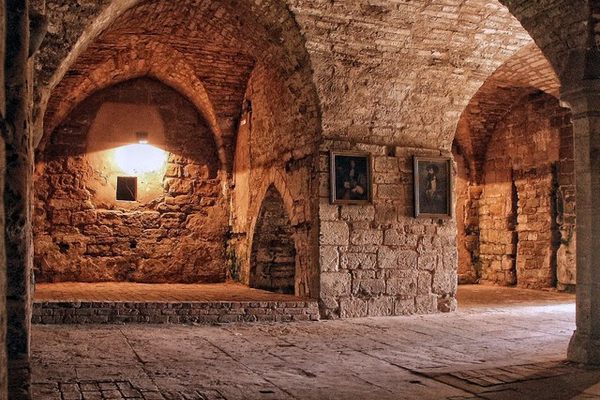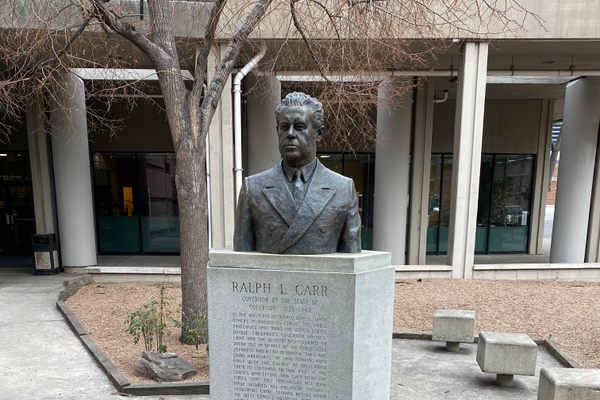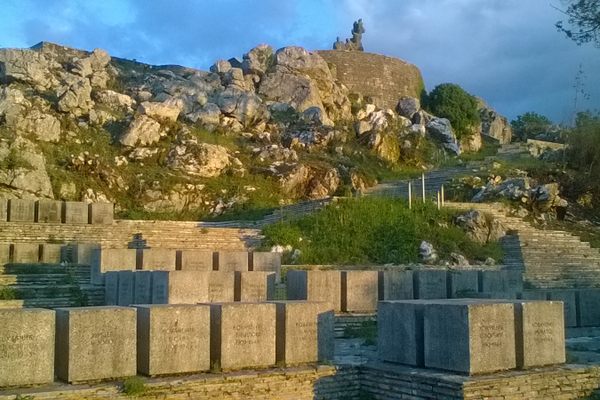The Oil Patch Warrior
A memorial to American oil drillers who volunteered to travel secretly to England in 1943 and work in the U.K.'s only oil field.
The Oil Patch Warrior is an evocative bronze statue which commemorates the 42 American oil drilling roughnecks who, during World War II, traveled to the famous Sherwood Forest in Nottinghamshire, England, to expand what was, in 1943, the United Kingdom’s only productive oilfield. This was at a time when the country was desperate for oil because of the regular losses of oil tankers to U-boats in the Battle of the Atlantic.
The drillers came from both Oklahoma and Texas and were all volunteers. Their companies had agreed to carry out the work at cost price. The drillers traveled across the Atlantic without incident on the HMS Queen Elizabeth in March 1943, but of their four drilling rigs, sent separately by cargo vessels, one was lost to a U-boat attack. The mission was kept top secret at the time.
While in the U.K., they were accommodated at Kelham Hall, an Anglican monastery at the time, now home to the recently relocated Duke’s Wood Oil Museum, which tells the story of this secret operation.
By drilling 106 wells (of which 94 were productive) between March 1943 and March 1944, they were able to increase the oilfield’s output from 300 barrels per day to 3,000 barrels per day, making a massive contribution to the war effort. The total added wartime production to the field was 1.2 million barrels and the field continued production up to 1965, helping the country’s post-war recovery. The total output from the field from 1939-1965 was 47 million barrels.
Of the 42 Noble Drilling Company and Fain-Porter Drilling Company employees who traveled to England, 41 returned to the U.S. in 1944 but one, Texan derrick-hand Herman Douthit, was killed in a fall from a drilling derrick and became one of only 32 civilians to be buried in the American Military Cemetery near Cambridge (plot c, row 5, grave 21). Fittingly, he was buried with full military honors.
The Oil Patch Warrior statue, by American sculptor Jay O’Melia, is one of two copies of the life-sized bronze figure holding a four-foot pipe wrench. The other is in Ardmore, Oklahoma, where many of the volunteers came from.
The English version of the statue was originally installed in 1991 at the oilfield site in Duke’s Wood near the village of Eakring but, in response to threats of theft and vandalism, has recently been relocated to take pride of place in a much more secure site at Rufford Abbey Country Park about four miles away. The Oklahoma version was installed in 2001. In 1991, the Noble Drilling Company funded a visit to Sherwood Forrest by 14 surviving members of the group for the dedication of the statue.
In Nottinghamshire, the information board behind the sculpture’s plinth provides details of the secret project, the people involved and further details on the Duke’s Wood site and its associated museum (which has now moved to Kelham Hall but retains its name).
Know Before You Go
From the Rufford Park parking lot, head toward the kid's play area. Walk under an arch consisting of two carved wooden dragons and you will find the statue.
Plan Your Trip
The Atlas Obscura Podcast is Back!




















Follow us on Twitter to get the latest on the world's hidden wonders.
Like us on Facebook to get the latest on the world's hidden wonders.
Follow us on Twitter Like us on Facebook